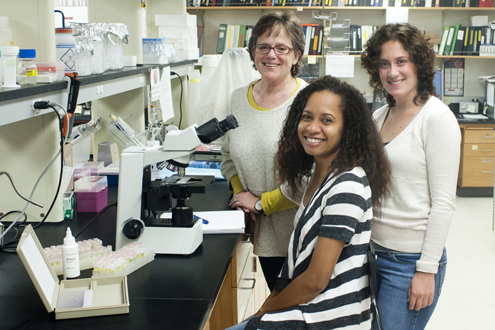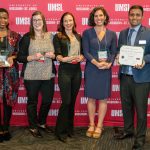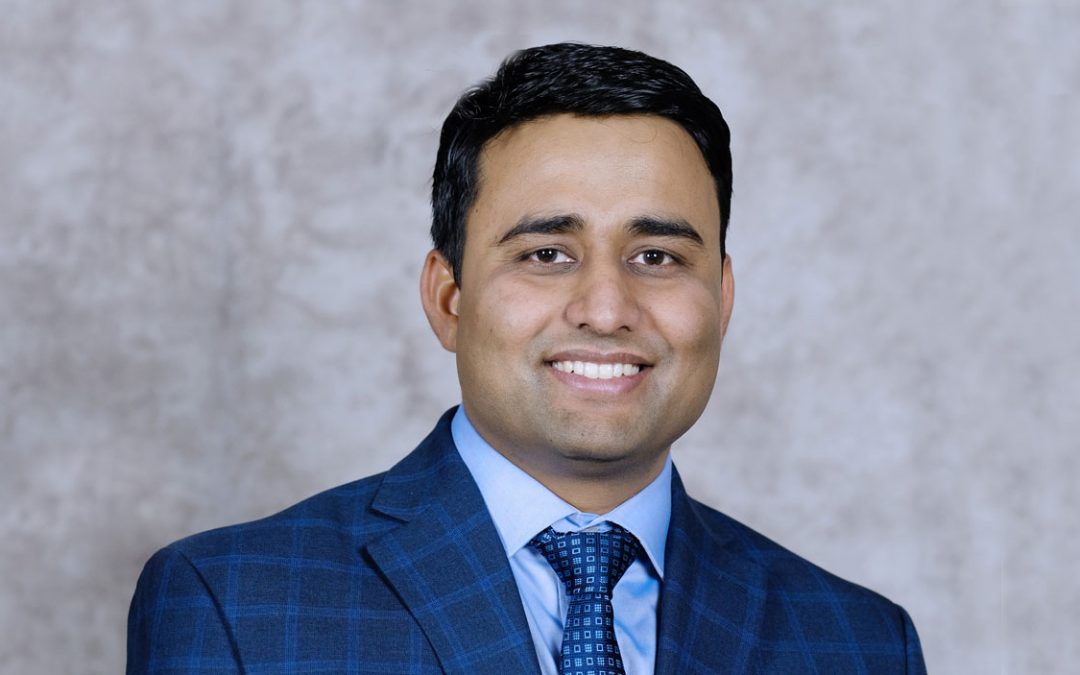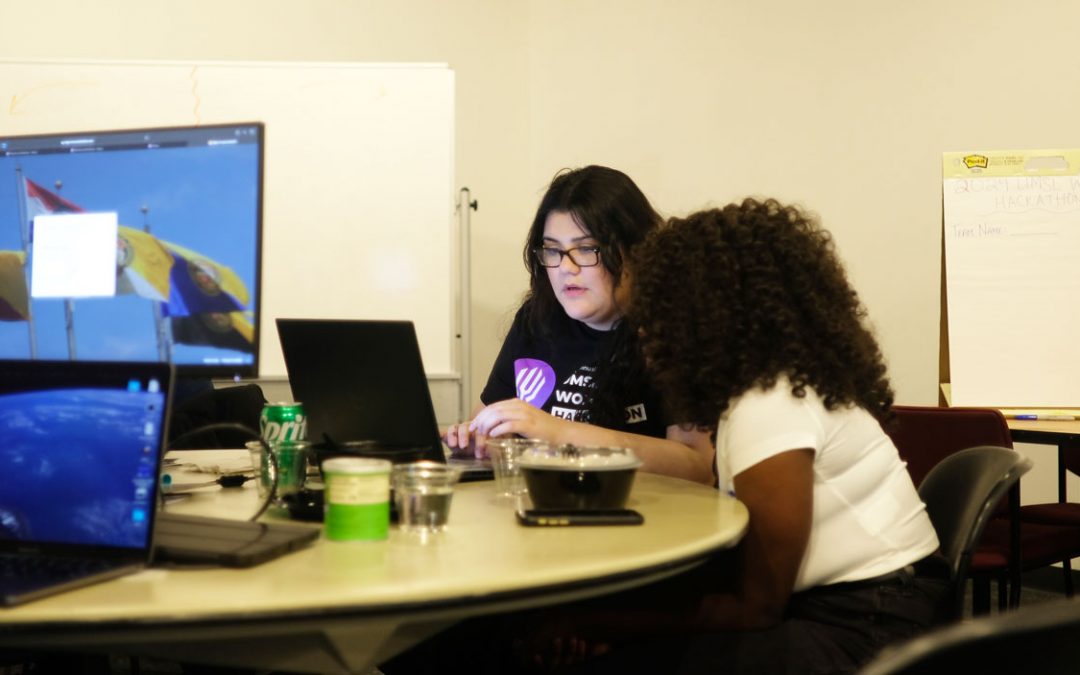
UMSL biologist Patricia Parker (left) poses by doctoral students Samoa Asigau (center) and Mari Cruz Jaramillo, who recently returned from the Galapagos Islands where they conducted malaria research. (Photo by August Jennewein)
“Do you know where her flies are?” Patricia Parker asks her lab assistant over the phone.
It might seem like an odd line of inquiry, but it’s all in a day’s work for Parker, the E. Desmond Lee Endowed Professor in Zoological Studies and chair of the Department of Biology at the University of Missouri–St. Louis. For the past decade she has been leading research in the Galapagos Islands on plasmodium, the parasite that causes malaria.
Hours before, Mari Cruz Jaramillo, a gradate student in biology at UMSL and a native of Ecuador, returned to St. Louis weighed down with bird blood and mosquito samples. She was part of a six-member, all-female team that spent two months conducting research in the Galapagos Islands. Four of the researchers are current UMSL students and one is an alumna who works at the Missouri Botanical Garden.
What was unusual about this latest research trip was that Jaramillo and fellow graduate student Samoa Asigau, a native of Papua New Guinea, were shadowed for 10 days by St. Louis Public Radio | 90.7 KWMU science reporter Véronique LaCapra. A Public Radio Exchange competition funded the trip with support from the Alfred P. Sloan Foundation.
The outcome of LaCapra’s journey was reflected in her radio feature “Two Young Women Scientists from UMSL Forge Their Futures in the Galapagos.” The story has aired on five other public radio stations, the farthest away KUOW (94.9 FM) in Seattle.
Parker, who joined UMSL in 2000, has been conducting research in the Galapagos for 15 years. For the last decade, she’s been working with her students to study disease transmission in the Galapagos, specifically the threat avian malaria poses to native bird species. Understanding that piece of the puzzle was what Jaramillo and Asigau spent the summer trying to solve. The outcome could have a big impact and not just in the Galapagos.
The plasmodium parasite has caused some of the best documented extinctions of birds in Hawaii, another archipelago in the Pacific.
“Here we have this highly protected Galapagos archipelago which has been an icon of conservation success for decades. And now malaria is there,” Parker says. “Is it going to wipe out the birds there? How do we understand where it came from? Is there one kind? Are there multiple kinds? We know it’s there and we know it’s being transmitted there and that’s what Mari and Samoa are trying to figure out. That’s where our collective interest is focused right now.”
Asigau focused her research on mosquitoes – trapping and dissecting them to find out which species are transmitting the disease.
“It would be satisfying for me to find this piece of the puzzle, knowing that my work could potentially help eradicate a species that may cause destruction or extinction of native wildlife in that area,” she says.
Jaramillo’s research involved mist netting birds, weighing and measuring them and taking a blood sample, and then testing those samples back in the lab at UMSL. The malaria parasite has been found in four native birds. The parasite is new enough that it hasn’t adapted to those birds as host.
“Although infected, they are not transmitting it,” Parker says. “The fact that we find it year after year in them means it’s coming through something successfully but not them. Mari is trying to find out what that something is.”
Jaramillo was the overall team leader, as she has extensive experience in the Galapagos. In fact, Parker and Jaramillo first met when Jaramillo was there as a volunteer working on another research project.
“Having spent so much time in the Galapagos I do feel this sense of protection, that I want to take care of the environment,” Jaramillo says. “For me it feels like home.”
Next spring, Asigau and Jaramillo will return to the Galapagos to continue their research. This time they’ll be there from February through April, the rainy season for the islands. That’s when the mosquitoes are more active and when transmission of the plasmodium will be at its peak.
The long-term goal is to identify how the malaria parasite is moving around. Depending on which species are involved in its transmission, it might be possible to eradicate it before it does massive harm to the Galapagos birds.
Once both women receive their doctorates from UMSL they plan on returning to their home countries to continue their research and inspire a new generation of scientists.
This story was originally published in the fall 2013 issue of UMSL Magazine.














